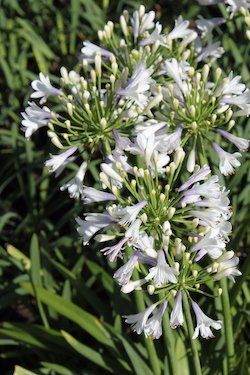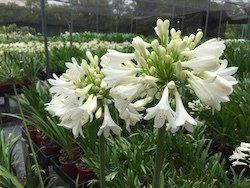Caring for agapanthus
Healthy agapanthus are seldom bothered by pest and diseases. In winter look out for mealy bugs with their tell-tale signs of white fluff in the central new foliage. These can be managed by squashing them, flooding with soapy water or diluted eco oils. If they become a serious problem, use a contact insecticide. At this time of year, red spider mites can also be a problem. These mites can be found on the underside of the foliage and can be difficult to see with the human eye. Hosing the plants thoroughly can reduce or eliminate them. If they become a serious problem, use a natra-soap or a miticide. In spring young foliage may be damaged by slugs and snails but the plants often quickly recover.
The most common problem with Agapanthus is rot. When day time temperatures exceed 35 degrees, its best not to water your agapanthus too often as it can promote plant and root rot. Plan to hydrate your plants ahead of any forecast hot periods. Other causes of rot include fertiliser burn from excessive use of fertiliser and poor drainage. To improve drainage, add a blend of loam and coir fines to the soil.

